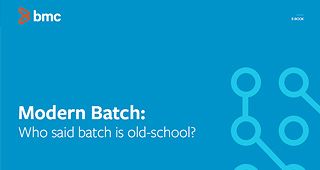It’s hard to win a race when you’re carrying extra baggage. When your business moves at digital speed, it’s not enough to deliver new business services more quickly—you’ve also got to keep the technical debt of legacy applications from weighing you down.
As the transition to digital continues to expand and accelerate, Gartner has been working to identify the formula for success for IT leaders today—a direction it calls ContinuousNext. In a recent report, “Predicts 2019: Governing Application and Product Portfolios,” the firm calls out two priorities familiar to many organizations:
- Supporting continuous improvement and continuous delivery for new services
- Preventing technical debt from undermining digital agility
It’s easy to see the connection between these two themes. The accumulation of technical debt makes it increasingly difficult to keep pace with the demands of digital business, as the requirements of legacy systems drain IT resources that could otherwise fuel innovation. Initiatives for application rationalization and modernization typically deal only with the symptoms of the problems without addressing the core issue: the changing relationship between business and IT assets. Gartner puts the impact of this situation bluntly: “By 2023, 90% of all technical debt existing today will still exist, and will continue to strangle business innovations.”
There’s a better way to manage the impact of technical debt. In fact, many organizations already have the right solution in-house: application workflow orchestration. As Gartner says, “With technical debt it’s not always the amount that paralyzes an organization, it’s how the technical debt affects the business process within that organization.” By using application workflow orchestration to enable a Jobs-as-Code approach to CI/CD, you can ensure delivery of new business services even as your legacy systems continue to play a mission-critical role.
Building Jobs-as-Code into your CI/CD pipeline eases the burden of technical debt and accelerates service delivery in several ways:
- By left-shifting job creation to the development stage, you can eliminate the need for scripting at the operations stage; IT ops receives production-ready applications.
- An automated CI/CD pipeline reduces manual work for developers, who can then focus on innovation.
- Defects and errors can be found much earlier in the software delivery lifecycle, when they can be fixed much more quickly and inexpensively.
The legacy systems and silos that drive technical debt won’t be modernized overnight—and trying to do so would be misguided anyway. What IT organizations really need to be asking is, how can we keep technical debt from undermining our agenda for transformation? And how can we build the fast, agile, and efficient CI/CD pipeline our business needs to enact this agenda? With Jobs-as-Code, you can answer both questions.
Take a modern approach to batch processing
These postings are my own and do not necessarily represent BMC's position, strategies, or opinion.
See an error or have a suggestion? Please let us know by emailing blogs@bmc.com.







